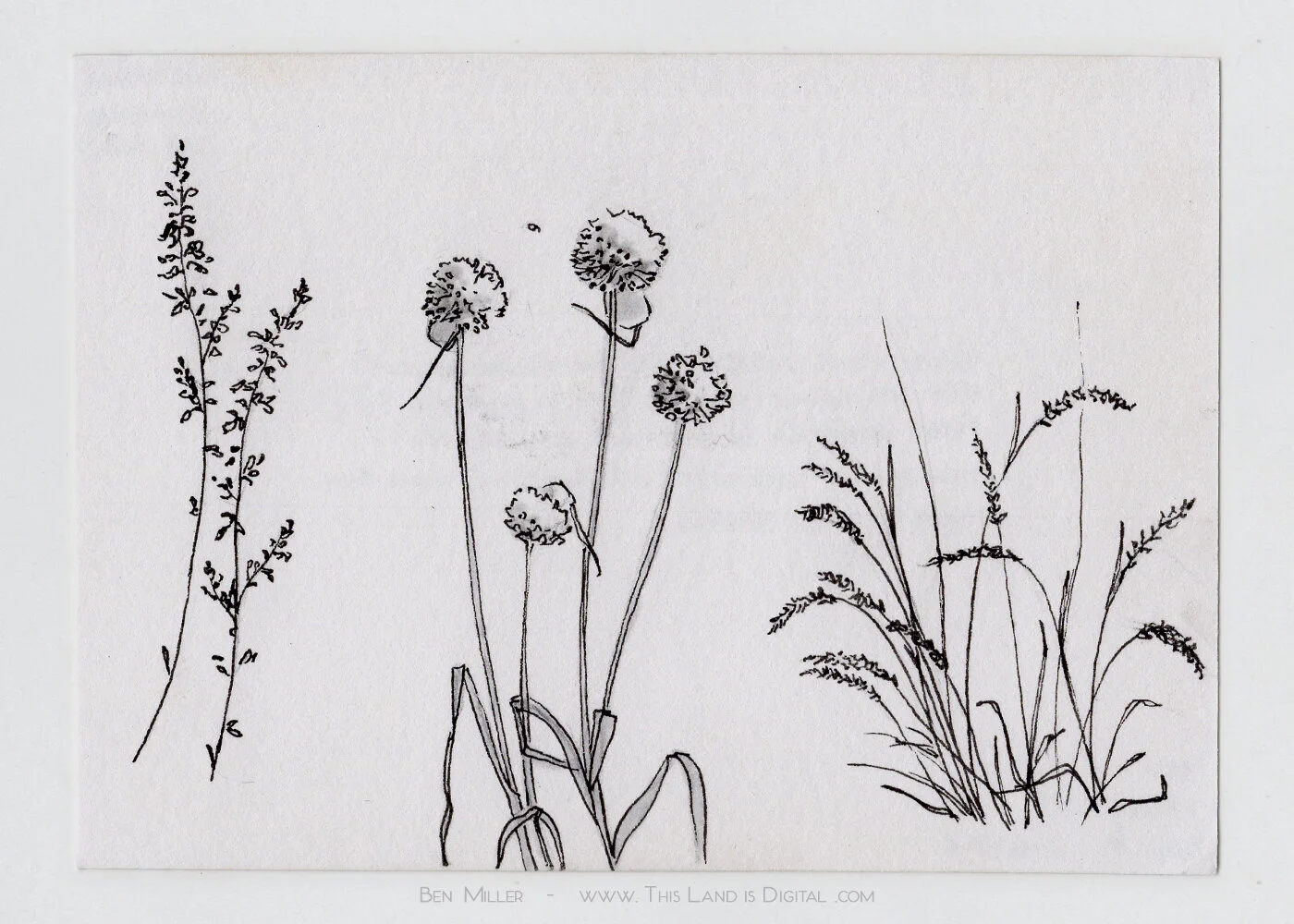Nature Sketches
Pen, Marker, Pencil, Paper (2018 - 2020)
Upon moving to California from Texas, my sudden proximity to mountains, forests, and flowers inspired me to start sketching plants in my neighborhood and, later, on my hikes.
Most sketches are 12.5 x 8.5 cm. I use my Instagram to document and share them.
The Mercy of Plants
Plants are a forgiving subject. We recognize plants not for their precise details but for their generic features. We give ourselves credit for recording the exact number of petals on a flower and the arrangement of leaves along its stem, yet we’d hardly roll out the red carpet when someone remembers to put two eyes on a portrait. Sketching plants allows me to focus more on the patterns of my strokes, on the weights of my lines, and on my choices of texture and shading.
Progress
I have continued sketching plants on and off since I arrived and in that time I’ve improved in a number of ways. First, of course, is in the development of a habit that will boost my confidence and artistic skills throughout my life. Much like going to the gym, the simple act of starting a sketch is what an artist should be most proud of.
Physically, I found it challenging to learn to draw standing up with my sketch in my hands rather than on a table. I started out with sketches from a nearby garden, then started bringing my little art kit with me on hikes, and even walked to local parks and campuses to find more flowers.
Technically, I’ve significantly expanded my ability to use pens, markers, and even pencils. Each sketch makes me choose whether to shade with hatching or markers, whether to highlight with pens or the white of the paper, whether to account for each element’s base shades, or whether to create a hybrid of all elements. Should textures be created through organic form, through contrasts in shading, through outlines, or through form-following hatches? The more times I repeat the process, the better I get at making good choices.
Artistically, choosing my compositions has presented its own series of challenges. I’ve learned that you can’t always fit every single branch and leaf that you see, so you need to be prepared to skip over areas or copy them from elsewhere on the plant. I constantly find myself deciding how many layers of leaves to depict given that each layer risks cluttering and confusing the overall image. Finding interesting subjects that will fit on a page requires some careful planning to ensure that what ends up on the paper looks good. Most of my pieces have a clear beginning and end to the composition as a result.
Art journals fascinate me and I’ve tried in many cases to include notes on the backsides of my cards to describe what was on my mind while drawing. I’ve tried bringing leaves and acorns back to my room to sketch in the evenings too. Occasionally I’ll choose to create a study of a plant, drawing it in several states of growth and decay, exploring its various structures, and presenting them on a single card.



























































